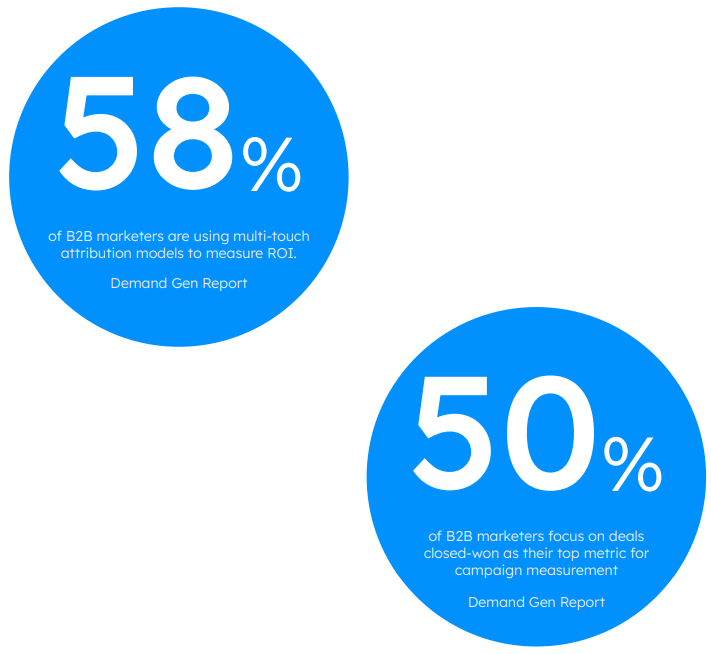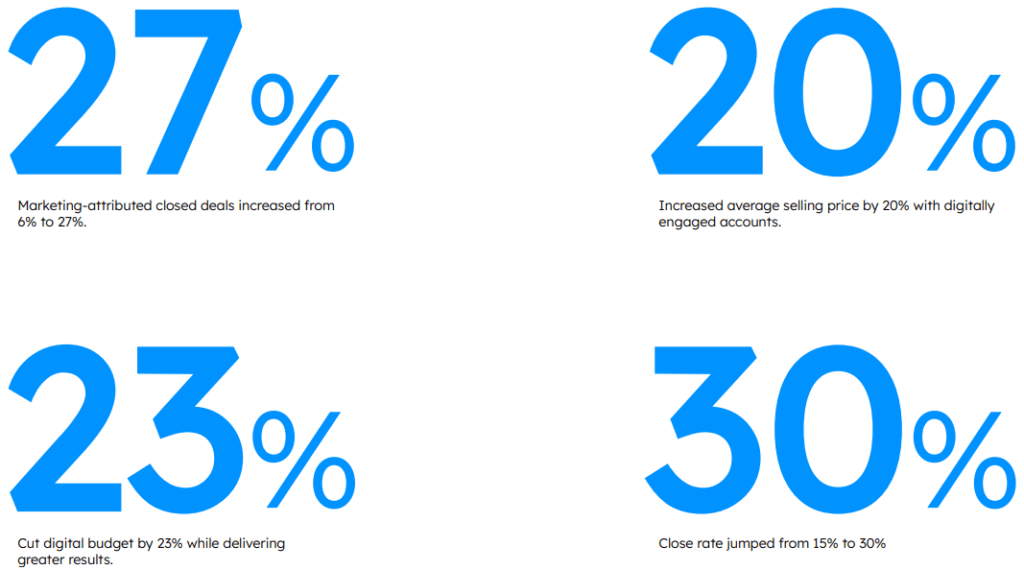Make your content work smarter
As a key tactic in the B2B revenue marketing toolkit, content syndication can benefit nearly any business if done right. But the way buyers make decisions has changed, so the way you deploy content syndication programs should change.
It was once considered best practice to send all leads from content syndication programs directly to tele-sales teams for qualification and follow-up. Due to significant changes in B2B buyer behavior, doing so today will damage the effectiveness of your content syndication program, hurt your relationship with sales, and create a suboptimal buying experience.
Today, B2B buyers do their own research, expect easy digital access to information, and often prefer a rep-free experience. Developing a thoughtful and precise lead nurture strategy is necessary to ensure the success of your content syndication program.
An effective, productive, and profitable content syndication nurture strategy includes five data-driven components:
- Progressive, personalized email nurture.
- Multi-channel nurturing: combining email and digital display ad nurtures.
- Individual lead scoring and buyer group scoring.
- Effective lead routing.
- Comprehensive measurement.
In this guide, we’ll explain the benefits of each component and how to use them to generate predictable pipeline through content syndication.
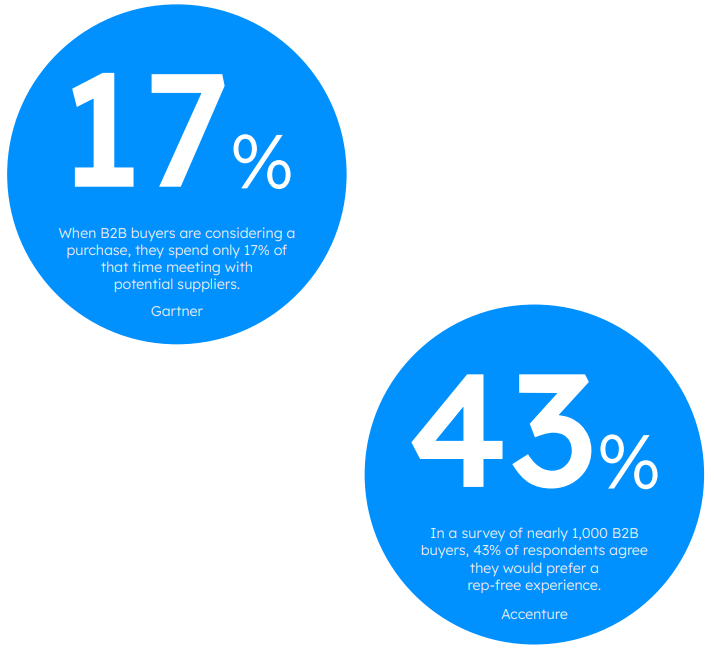
Progressive personalized email nurture
More effective email follow-up
The most important job for any marketer is to increase the odds that your brand will be top of mind when a customer is ready to buy. Nurturing your content syndication leads with timely and relevant emails is an effective way to do this. But your nurture can’t be one size fits all. Because so much more of the buyer journey today happens independently, personalization and segmentation are essential for effective email nurturing.
A persona or topic-based segmentation approach based on your content inventory and go-to-market strategy is an excellent way to influence a buyer’s purchase decision. Develop an email nurture track for each of your segments consisting of the appropriate content and messaging to support the early-stage research needs of your specific buyer personas.
What are the right types of content? Studies from CMO Council show:
- Industry and category surveys and studies.
- Analyst reviews and recommendations.
- Thought leadership with supporting facts and research.
- Third-party content.
- Technical details about products and solutions.

Multi-channel nurturing
Reach buyers where they are
Email is a great way to nurture leads and support the buyer’s journey, but it shouldn’t be the only option for lead nurturing. Think about your own experience. Do you read every email that hits your inbox? Unlikely. In fact, the average open rate for B2B emails is only 15%.
Instead of relying solely on email, there are a variety of other channels — industry publications, news websites, journals, and social media platforms to name a few — where you can fnd today’s buyers doing their research, primed for engagement. Pairing your email nurtures with targeted, account-based digital display ads can help you reach buyers on the third-party channels where they’re already conducting research.
Furthermore, email nurture may only reach one or two buyers at an account. B2B buyers make purchase decisions in groups, and 94% of buyers who download content share it with buying group members. Targeting through additional channels can help you engage buying groups and increase leads at an organization, capitalizing on this sharing behavior.
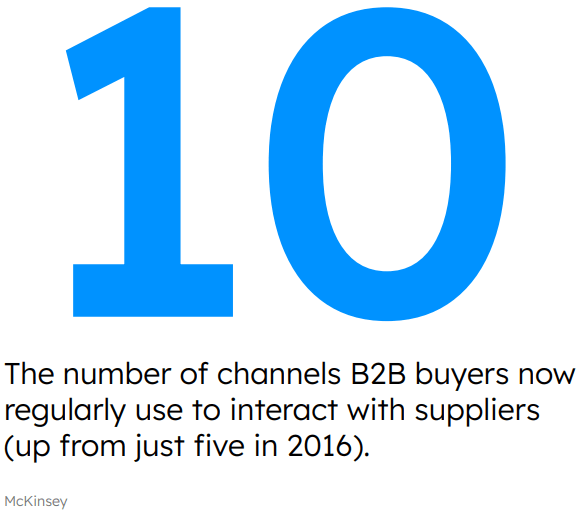
Combining email and digital display ad nurturing
Combine your tactics to win big
The benefits of using digital display advertising with a well-structured email program include increased email nurture engagement, more search engine traffic to your website, and faster sales velocity. The key to combining your programs is in audience selection and messaging progression.
- For advertising, select target accounts where buyers have already engaged with your content syndication, and update weekly.
- Clearly target specific job titles and geographies to ensure you’re only spending on ideal customer profile (ICP) buyers.
- Use awareness-, consideration-, and action-oriented progressive messaging in your ads — for example:
- Awareness: a buyer problem your brand solves.
- Consideration: solutions and best practices.
- Action: case studies, demos, product webinars.
The more relevant and personalized your messaging, the more effective your digital ads will be. To increase your sales velocity further, segment personas within your target accounts into personalized ad nurture flights. Similar to your email nurture tracks, each ad flight should tell a progressive story, aimed at engaging specific roles within larger buying groups.
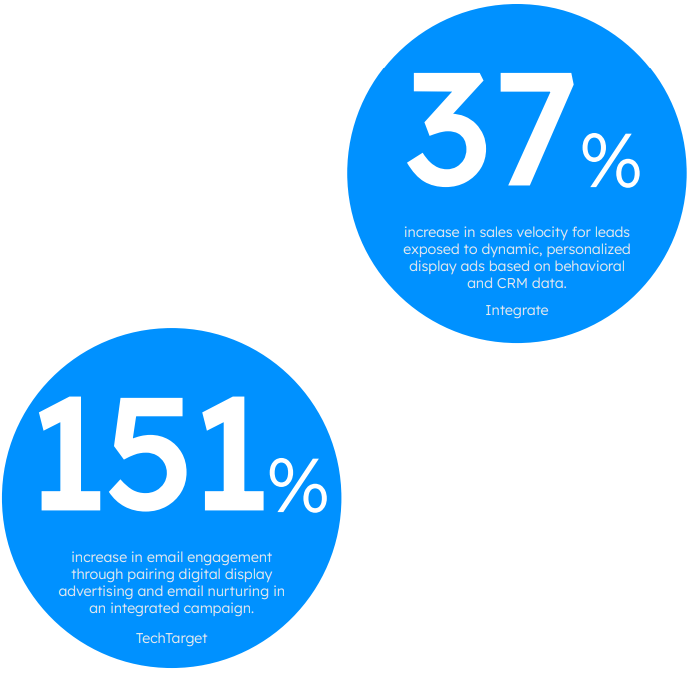
Lead scoring
The right way to score your leads
Lead scoring is the process of assigning values to buyer engagement to identify leads that are ready for sales. A lead should only become a marketing qualified lead (MQL) once it reaches a specific score based on engagement. There are two types of engagement to consider when lead scoring: identifiable and anonymous.
- Identifiable activity can be attributed to a specific buyer that is in your database.
- Anonymous activity cannot be attributed to a specific buyer, but it can be attributed to an account.
Identifiable activities should be scored based on the value of the buyer’s behavior. For example, filling out a form to download an guide should be scored higher than simply opening an email. Totaling up these scores gives you a “behavioral score.”
Anonymous activity is account based and can be scored based on four categories:
- Engagement intent (page views).
- Research intent (relevant research on third-party sites).
- Display advertising engagement (impressions and clicks).
- Demographic criteria (company size).
Totaling up account level activity and criteria gives you a “demographic score.”
Calculating your MQL score should combine behavioral and demographic scores in a matrix. Ultimately, your lead scoring model should look something like this:
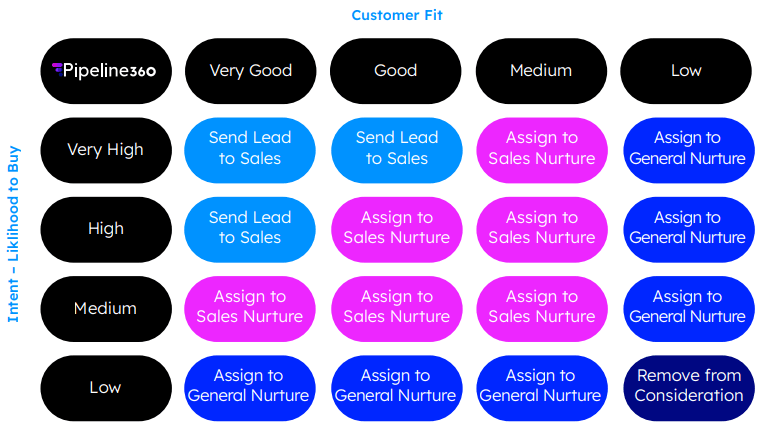
Lead routing
Improve engagement through better lead routing
Lead routing defines how, when, and to whom on the sales team marketing-qualified leads are sent. It’s crucial to account for buying groups in your lead routing, but many marketers don’t. Many lead routing processes — using marketing automation to send qualified leads to sales — fall victim to “second-lead syndrome.” According to Forrester, second-lead syndrome happens when a lead routing process only values the first new qualified lead from an account, disqualifying any subsequent leads as redundant.
So, how can you avoid this potential lead routing nightmare?
- Create a buying group-friendly lead routing process: Every lead, not just the initial one, should be sent to that account’s sales rep once it reaches the appropriate score.
- Clearly define service level agreements: We recommend that every marketing qualified lead (MQL) should be contacted within 24 hours, and that demo requests be replied to within 10 minutes.
- Clearly define the rules of engagement: You don’t want multiple sales reps following up with the same buying group, and you do want to be strategic about priority accounts.
We recommend starting with basic rules of engagement:
- If an MQL comes in that is a VP level or higher from a strategic account, then the SDR should forward the MQL immediately to a sales rep.
- When an MQL comes in, an SDR should check to see if there is sales engagement within the account. If there is a sales rep involved already, the SDR should forward the MQL to that sales rep.
- If an MQL comes in with no active sales engagement on the account, and is not a strategic or enterprise account, and is below a VP level, the SDR should own follow-up.
Comprehensive measurement of follow-up
The real ROI of content syndication
One of the most important parts of a successful lead nurture program is measuring your efforts, without which you can’t accurately optimize and increase program effectiveness, not to mention prove its business value.
There are five areas to measure:
- Lead nurture velocity: How quickly are leads moving from nurture programs to becoming a qualified lead?
- Email nurture performance: Create benchmarks for every action, including opt-in, open rate, click rate, sequence completion, conversion rate, and lead score.
- Digital display ad performance: Measure impressions per account, clicks per account, number of accounts nurtured through all three steps of an ad flight, and directly attributable conversions.
- Indirect but attributable ad performance: If you’re using ad tech that employs reverse IP lookups, use visitor data to track the following on an account basis: total visits and visitors, pages per visit, and visits to high-value pages.
- Cross-channel influence: When visitors self-identify by filling out a form, you should track inbound leads from accounts that were engaged by ads and syndication. You should also track accounts engaged by display ads and content syndication.
To get an idea of the impact of your content syndication and follow-up program on the bottom line, use a total touch attribution model, which reflects today’s complex buying processes. It rests on the assumption that every touchpoint is valuable because it contributes to the completion of a buyer’s journey. Within this model, you should measure: Number of opportunities influenced; value of open opportunities influenced; close rate of opportunities influenced; and value of deals closed-won influenced.
- As you can see, while content syndication on its own is an effective and costefficient way to reach early-stage buyers, like all marketing tactics, it requires thorough nurturing, lead follow-up and measurement to achieve its full value.
